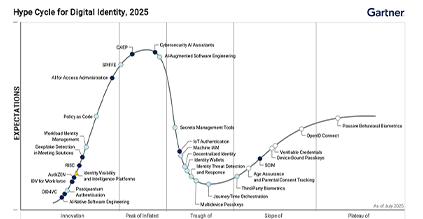How HR departments should think about hiring and remote onboarding

The evolution of technology has allowed more organizations to embrace a hybrid or remote work environment. This enables organizations to access a deeper pool of qualified candidates and has changed employee expectations on how they interact with their employers. As a result, it has completely transformed the role of the human resources (HR) department.
Various tech advances have helped digitize HR professionals' workflows, but the tools they use need to evolve to meet the changing needs associated with talent acquisition, new hire onboarding, and ongoing support for both remote and on-premises employees.
The remote onboarding process
The new employee onboarding process traditionally requires manual signatures on contracts, benefits agreements, payroll information, and other new hire documents. In fact, nearly 60% of HR professionals in SMBs still rely on paper, spreadsheets, and other manual tools to manage their recruiting, onboarding, and talent management functions. This is time-consuming and introduces a number of security and compliance risks.
It’s little surprise that by using only a manual process, more than half of HR departments are understaffed and working beyond capacity, and 56% of HR professionals say their department lacks sufficient staff to cover the workload.
Being understaffed does not reduce the critical role the HR department plays in a new employee experience. HR departments must identify and implement more effective methods to complete the remote onboarding process.
Leveraging automation cloud-based software, for example, helps HR departments navigate the unique needs associated with remote hiring and onboarding by removing time-consuming tasks for HR professionals and new hires. Creating an automated onboarding process allows HR professionals to establish a digital workflow to ensure new hires automatically receive the next document to sign in their remote onboarding process after the previous item has been completed. A component of this also extends to using generative AI to automate various tasks to reduce onboarding time and improve employee experience.
When using cloud-based software, however, it is important to take all the proper safety precautions, such as using identity document verification (IDV) in your document signing process. This ensures that the person who receives the document is the intended recipient. Taking the proper precautions has become increasingly important in light of recent hacking news including North Korean IT workers working for Fortune 100 companies to generate revenue for the North Korean government, and potentially uploading malware to the company’s database.
A separate example shared on Linkedin by Rob Leslie, founder and CEO of Sedicii, further emphasizes the need for security as part of a remote hiring process. "Last week we posted a job advert on Linkedin looking for a full-stack engineer. Within a very short amount of time we had nearly 90 applications from all over Europe. The long list was screened down to a shortlist of 13 who were all interviewed. We landed on 3 who were all lined up for 2nd interviews which were conducted and 2 candidates chosen for a final interview and vetting. [...] Our team did not spot the deception until we started to drill into it in detail. I have contacted LinkedIn as I suspect there is a major criminal ring at work."
Ensuring that your remote processes are secure, including the digital identity verification and eSignature steps, is crucial and should not be an afterthought in the remote hiring process.
The role of eSignatures in a remote hiring world
Whether manual or semi-digital, the traditional onboarding process can be extremely lengthy. Waiting for physical signatures can make the onboarding process stretch out for weeks. Using digital tools to streamline onboarding can help reduce the time needed to complete the process from two weeks to two days.
Integrating an eSignature solution into your existing HR applications can enhance the remote onboarding experience even further. There are a number of benefits associated with digitally capturing eSignatures aligned with your existing tech stack. These include:
- Reducing the risk of human error, such as misplacing a critical document or forgetting to ask for a signature on a document
- Increasing security by removing potential risk factors
- Enhancing the speed and efficiency of the overall process
Additionally, by integrating eSignatures into your existing HR applications, you minimize the need for manual archiving and reduce the risk of compliance errors or inefficiencies.
Using eSignatures to enhance remote onboarding
By using smart digital strategies, like integrating an eSignature solution directly into your existing HR applications, HR professionals can onboard remote employees faster and more efficiently. This helps demonstrate compliance, improves HR productivity, and creates a positive remote onboarding experience.









